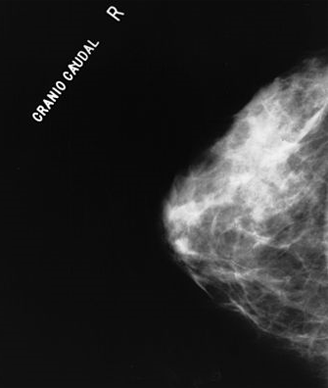New ACS Guidelines Recommend Later, Less Frequent Breast Cancer Screening
New breast cancer screening guidelines from the American Cancer Society recommend pushing the start of screening back by 5 years and screening every other year rather than annually starting at age 55.
New ACS guidelines recommend starting mammography screening at age 45 for low- and average-risk women

New breast cancer screening guidelines issued by the American Cancer Society (ACS) now recommend pushing the start of screening back by 5 years and screening every other year rather than annually starting at age 55. The detailed guidelines are published in JAMA.
“The intention of this new guideline is to provide both guidance and flexibility for women about when to start and stop screening mammography and how frequently to be screened for breast cancer,” wrote Kevin C. Oeffinger, MD, of the Memorial Sloan Kettering Cancer Center in New York, and coauthors.
The ACS now recommends that women should have an annual mammogram starting at age 45 rather than 40, and that women age 55 and older with an average or low risk of breast cancer can opt for screening every other year rather than annually. The guidelines note that women between 40 and 44 years of age should have the option for annual screening. Furthermore, routine manual breast exams by doctors are no longer recommended for women with average risk of breast cancer.
The last issued update on screening from the ACS was published in 2003. Since then, there have been numerous controlled and observational studies on screening programs. The new guidelines incorporate this new literature.
The ACS, the US Preventive Services Task Force (USPSTF), and the American College of Obstetricians and Gynecologists, all now recommend different ages for the initiation of breast cancer screening-age 45, 50, and 40, respectively.
The authors of the guideline emphasized that women should be encouraged to discuss their specific family and medical histories with their clinician who should assess the patient’s risk for breast cancer and develop a tailored screening program. Discussions of screening between a woman and her clinician should occur around age 40.
In an accompanying editorial, Nancy L. Keating, MD, MPH, of the Harvard Medical School in Boston, and Lydia E. Pace, MD, MPH, of Brigham and Women’s Hospital in Boston, wrote that the ACS and USPSTF guidelines are generally consistent, agreeing that the scientific literature suggests the harms of mammography screening likely outweighs the benefits for those women younger than 45 years of age.
For women older than 55, screening every other year will likely provide the best balance of harm and benefit while the age cohort that faces the most challenging screening decisions will be women aged 45 to 54. The ACS recommends yearly screening for women in this age group while the USPSTF recommends no screening until age 50 and biennial screening for those between the ages of 50 and 54. “In communicating with patients, clinicians will have to balance the ACS’ recommendation for more frequent screening against the fact that younger women experience a lower absolute benefit from screening mammography,” wrote the editorial authors.